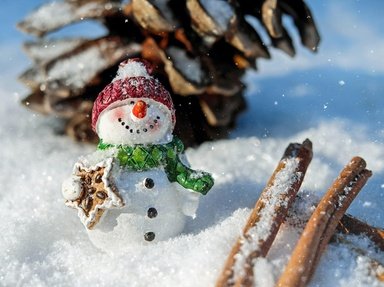Quiz Answer Key and Fun Facts
1. The modern Christmas tree can trace its origins to the Livonia (Estonia / Latvia) area of northern Europe in medieval times. Protestant Germanic people would take evergreen trees into their homes and decorate them. Which type of tree would *NOT* be suitable?
2. The use of evergreen trees as symbols precedes Christian beliefs. Tree worship was a common Pagan ritual. In one place, Koliada, a Pagan winter festival (later incorporated into Christmas celebrations) included suspending an evergreen branch from the ceiling and decorating it with apples, nuts, paper stars and ribbons. This was called a "Podlazniczka" (Anglicised spelling).
Which country celebrated this custom?
3. The ritual of Christmas trees was introduced into Britain at a Christmas party for children by a German-born royal. Who was this person?
4. True or False. The Christmas tree tradition was introduced into North America by Hessian soldiers stationed in Quebec in 1781 to guard the colony against American attack?
5. In Russia, the Christmas tree was banned during the October Revolution in 1917 but in 1935 it was revitalised in a different form. On what holiday was it used as a commemoration?
6. Outdoors public Christmas trees have certainly raised the linking of such trees with Christmas. Where is the US National Christmas Tree located?
7. True or False: There is an agreed world-wide time frame when a Christmas Tree should be set up and taken down?
8. Christmas trees are so popular there are actually Christmas tree farms that grow the requisite conifer trees just for Christmas. How long does it take for a Christmas tree to reach seven feet or 2.1 metres?
9. Artificial trees are becoming more popular. Which of the following has *NOT* been made into Christmas trees?
10. There is no doubt that it was the Protestant church that advocated for the inclusion of Christmas trees as part of the religious component of Christmas. Perhaps the acceptance by the Roman Catholic Church was when Pope John Paul II introduced the Christmas tree in the Vatican. What year was this?
Source: Author
1nn1
This quiz was reviewed by FunTrivia editor
agony before going online.
Any errors found in FunTrivia content are routinely corrected through our feedback system.
